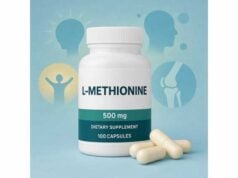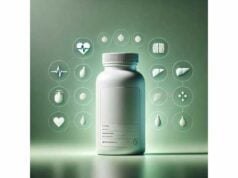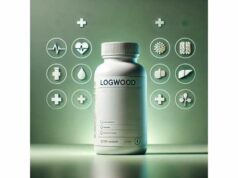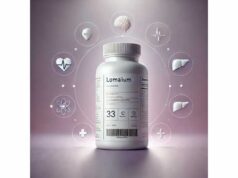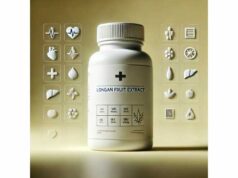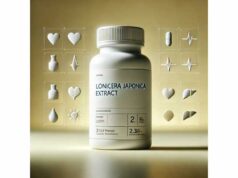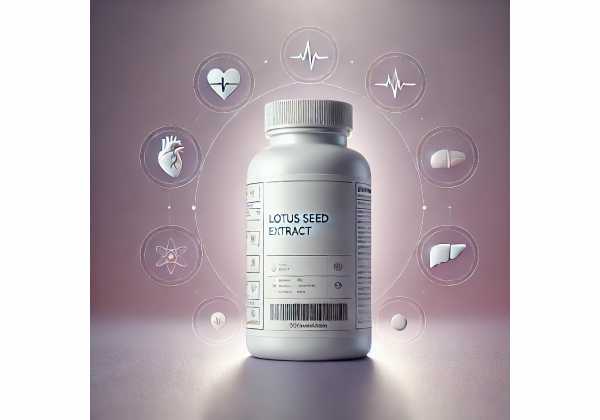
Lotus seed extract—derived from the edible seeds of Nelumbo nucifera—brings together the nourishment of a staple food and the targeted activity of a botanical. Unlike stimulant-heavy “fat burners,” lotus seed preparations focus on bisbenzylisoquinoline alkaloids (notably neferine, liensinine, and isoliensinine), polyphenols, and proteins that may influence blood pressure regulation, metabolic balance, oxidative stress, and sleep–stress physiology. Traditional systems use the seed for digestive comfort and calm; modern laboratory work explores mechanisms across the gut–vascular–brain axis. In practical terms, people reach for lotus seed extract as a non-stimulant adjunct for cardiometabolic support, gentle relaxation before bed, and antioxidant coverage—often in capsule form or as tea made from the bitter green seed embryo (“lotus plumule”). This guide keeps the focus on real-world use: what it is, where it may help, how to choose and dose it, and how to avoid common pitfalls.
Essential Insights
- May support blood pressure, antioxidant status, and metabolic balance; calming effects are most associated with the seed embryo (plumule).
- Typical supplemental range: 200–600 mg/day standardized lotus seed or plumule extract; tea: 1–2 g dried plumule per cup.
- Mild gastrointestinal upset or drowsiness can occur; stop if you notice unusual symptoms or signs of liver stress.
- Avoid if pregnant or breastfeeding, with significant liver disease, or when taking anticoagulants without medical supervision.
Table of Contents
- What is lotus seed extract?
- Does it work and what are the key benefits?
- How to use lotus seed extract
- How much to take and for how long
- Safety, side effects, and who should avoid it
- What the evidence says: strengths and gaps
What is lotus seed extract?
Lotus seed extract comes from the mature seeds of Nelumbo nucifera, commonly used as a food across Asia. When you eat lotus seeds in soups or desserts, you are getting mainly starches, proteins, and minerals. When you take a standardized extract, you are concentrating specific bioactive compounds—especially bisbenzylisoquinoline alkaloids (neferine, liensinine, isoliensinine), along with polyphenols and small peptides—that are studied for their effects on blood vessels, oxidative stress, lipid handling, and the nervous system.
Seed vs. seed embryo (plumule). The seed contains a small, bitter, green embryo in the center—the lotus plumule. This tiny part is disproportionately rich in the alkaloids linked to calming and vascular actions. Many “lotus seed” teas actually use the plumule, not the whole seed. Product labels may say “lotus seed,” “Nelumbinis semen,” “lotus plumule,” or “lotus seed embryo.” For targeted effects, it helps to know which part you’re getting.
Key constituents and why they matter
- Neferine, liensinine, isoliensinine (alkaloids): studied for vasodilation (nitric oxide pathways), calcium-channel modulation, anti-inflammatory signaling, and antiadipogenic actions in cell models.
- Flavonoids and phenolics: contribute antioxidant capacity and may influence lipid metabolism enzymes.
- Proteins and amino acids: add to the nutritional profile; minor bioactive peptides may support antioxidant defenses.
How lotus seed extract may work (plain-language view)
- Blood pressure and vascular tone: Supports nitric-oxide signaling and may temper renin–angiotensin activity, promoting easier vessel relaxation.
- Antioxidant and inflammation balance: Scavenges reactive oxygen species and modulates cytokine signals that drive vascular and metabolic stress.
- Metabolic effects: In cell and animal models, lotus seed alkaloids reduce fat cell formation markers and improve lipid parameters; in practical terms, think “modest help” rather than dramatic weight loss.
- Calming and sleep support: Traditional use centers on “quieting the heart.” The plumule’s alkaloids appear to interact with pathways that reduce over-arousal, matching many users’ reports of easier wind-down.
Forms you will see
- Standardized capsules/tablets: Often labeled to alkaloid content (e.g., “2% total bisbenzylisoquinoline alkaloids”) or to neferine percentage.
- Tea (tisane): Usually the bitterness of plumule tea; whole seed teas are milder.
- Powders: Convenient for smoothies; quality varies more than standardized capsules.
Choosing quality
- Look for plant part (seed vs. plumule), extraction ratio (e.g., 10:1), and standardized markers (e.g., total alkaloids or neferine %).
- Prefer brands that publish Certificates of Analysis (COAs) for identity, potency, heavy metals, and microbial testing.
Does it work and what are the key benefits?
Lotus seed extract is not a cure-all, but it does have clear use-cases supported by traditional practice and modern laboratory findings, with early preclinical studies mapping plausible mechanisms. Here’s how the benefits translate for everyday use:
1) Blood pressure and vascular health (most promising area)
Controlled animal studies with chemically induced hypertension show reductions in systolic blood pressure alongside improvements in nitric oxide availability and decreases in oxidative stress markers after lotus seed extract use. Mechanistic readouts include upregulation of endothelial nitric oxide synthase (eNOS), lower angiotensin II activity, and dampened NADPH oxidase signaling. For people, this suggests potential as a non-stimulant adjunct to lifestyle measures (and, if prescribed, medication) for blood pressure management.
2) Antioxidant support and inflammation balance
The seed’s phenolics and alkaloids repeatedly demonstrate antioxidant activity in-vitro and in animal models. That can translate to subtle improvements in recovery from metabolic or vascular stress. If your goals include cardiometabolic resilience or healthy aging, lotus seed extract contributes to the “antioxidant stack” without caffeine-like stimulation.
3) Metabolic and weight-related support (modest)
Seed-embryo alkaloids show antiadipogenic actions in fat cells and may shift lipid metabolism toward a healthier profile in preclinical work. Users sometimes report easier weight maintenance when lotus is paired with reliable nutrition and movement habits, but you should expect gradual effects rather than rapid changes.
4) Calm, sleep, and stress
The plumule is prized for a calming profile. While modern clinical data are limited, traditional use and pharmacology both point toward reduced over-arousal in the evening, making lotus plumule tea a reasonable “wind-down” choice for sensitive sleepers who avoid sedating drugs.
Who seems to benefit most?
- Adults with borderline or mild hypertension seeking a gentle adjunct (with clinician oversight if on medication).
- Those building a non-stimulant antioxidant and metabolic stack, especially if caffeine-sensitive.
- Evening worriers who do better with a calming tea ritual than with capsules.
Where expectations should stay realistic
- Weight loss magnitude is generally modest and depends on diet, protein intake, and activity.
- Glucose control signals are preliminary; don’t expect medication-level effects.
How long until you notice something?
- For blood pressure and energy/stress, 2–4 weeks is a reasonable checkpoint.
- For body composition or lipid shifts, plan for 8–12 weeks with consistent habits.
How to use lotus seed extract
Pick the right part and format
- For calm/sleep: Choose plumule (seed embryo) tea or extract; its bitterness is a hint you’ve got the right material.
- For vascular/metabolic goals: Either standardized seed extract or plumule extract works; the latter is richer in target alkaloids.
Practical ways to take it
- Capsules/tablets: Simple and consistent; ideal for day-to-day dosing and travel.
- Tea/tisane (plumule): Tastes bitter and herbaceous; perfect for an evening wind-down ritual.
- Powders: Mix into smoothies; verify standardization and origin.
Timing guidance
- Once daily with food: Good default for sensitivity.
- Twice daily (AM + main meal): If your goal is vascular support or antioxidant coverage throughout the day.
- Evening-only (tea): If calm and sleep are your focus; avoid stacking with other sedatives.
Stacking ideas (keep it simple)
- With magnesium glycinate (night): Complements the calming profile of plumule tea.
- With omega-3s or olive-polyphenol extracts (day): Adds cardiometabolic coverage without stimulants.
- With fiber (psyllium) at meals: Helps lipids and satiety; separate by 1–2 hours from medications.
A sample 12-week plan (adjust as needed)
- Weeks 1–2: 200–300 mg/day standardized seed or plumule extract with food; or 1 cup plumule tea after dinner. Track blood pressure at home if that’s a goal.
- Weeks 3–8: Increase to 200–300 mg twice daily (or 400–600 mg once daily) if well tolerated; or 1–2 cups tea daily.
- Weeks 9–12: Continue if you see progress; consider lab checks (lipids, if relevant) and compare a blood pressure log to baseline.
- Reassess: Either maintain the lowest effective dose or cycle off for 2–4 weeks to evaluate whether benefits hold.
How to brew plumule tea
- Use 1–2 g dried plumule per cup.
- Steep in hot (not boiling) water for 6–10 minutes; longer steeps are more bitter but stronger.
- Optional: blend with chamomile or lemongrass to soften the flavor.
Monitor what matters
- If blood pressure is your target, use a validated home cuff, same arm/time daily.
- For calm and sleep, track sleep onset, night awakenings, and next-day alertness.
How much to take and for how long
Standardized extract (adults)
- Common range: 200–600 mg/day, divided once or twice daily with food.
- Start at 200–300 mg once daily if you’re sensitive or smaller-bodied; increase gradually if needed.
- If the label lists total alkaloids (e.g., “2% alkaloids”), stay at the lower end until you know your response.
Plumule (seed embryo) tea or extract
- Tea: 1–2 g dried plumule per cup; 1–2 cups/day, most often in the evening.
- Extract: Begin at 200 mg/day; increase to 400–600 mg/day if calm/sleep support is your goal and you tolerate it.
Duration
- For vascular or metabolic goals, allow 8–12 weeks before judging benefit.
- For calming effects, you may notice changes within days to 2 weeks.
- After 12 weeks, either reduce to a maintenance dose or take a 2–4 week break to reassess.
When to reduce or stop
- New abdominal pain, dark urine, yellowing of eyes/skin, or persistent fatigue/itching—stop and seek medical advice.
- Excess drowsiness, lightheadedness, or a noticeable drop in blood pressure—cut dose or stop and consult a clinician.
- If starting medications with narrow therapeutic windows (e.g., antiarrhythmics, anticoagulants), pause lotus seed extract until your prescriber clears it.
Label-reading checklist
- Confirms plant part (seed vs. plumule).
- Discloses extraction ratio and standardization (total alkaloids or neferine %).
- Provides lot/batch COA with contaminant testing (heavy metals, microbes).
Special populations
- Pregnant/breastfeeding: Avoid (insufficient safety data).
- Adolescents: Use only under qualified guidance.
- Chronic liver or kidney disease: Avoid self-experimentation; work with a clinician and get baseline labs.
Safety, side effects, and who should avoid it
Typical tolerability
- Most people tolerate lotus seed preparations well, especially at 200–400 mg/day or 1 cup tea nightly.
- Mild effects can include digestive upset, nausea, or drowsiness (more likely with plumule).
Less common but important
- Blood pressure lowering: If you already take antihypertensives, lotus seed extract may add to the effect. Monitor regularly and coordinate medication adjustments only with your prescriber.
- Liver health: Serious reactions are rare for lotus seed; nonetheless, any supplement can unmask a latent issue. Watch for warning signs (jaundice, dark urine, right-upper-quadrant pain) and discontinue immediately if they occur.
- Allergy: Stop on first signs of hives, wheeze, or throat tightness and seek care.
Medication cautions
- Anticoagulants/antiplatelets (e.g., warfarin, apixaban, clopidogrel): Use only with prescriber oversight due to theoretical interaction risks.
- Sedatives/hypnotics: Plumule’s calming properties may increase drowsiness; avoid mixing with alcohol or bedtime sedatives without guidance.
- Hypotension-prone individuals: Start at low doses and rise slowly.
Quality and contamination
- As an aquatic plant product, lotus can accumulate heavy metals depending on growing conditions. Favor brands showing recent COAs for lead, cadmium, arsenic, and mercury.
When to get help
- Stop the supplement.
- Document dose, brand, and start date plus any other supplements or drugs.
- Contact a clinician, especially if you have liver or bleeding symptoms, or if your blood pressure drops too low.
What the evidence says: strengths and gaps
Where the science is strongest
- Vascular effects in controlled animal models: Multiple studies report lower blood pressure, improved nitric-oxide signaling, and reduced markers of oxidative stress after lotus seed extract. These effects align with the known pharmacology of seed-embryo alkaloids.
- Chemistry and mechanism mapping: Modern analyses confirm that lotus plumule concentrates bisbenzylisoquinoline alkaloids with actions on calcium handling, endothelial signaling, and inflammatory pathways. Cell studies show antiadipogenic effects via PPARγ downregulation.
- Nutritional foundation: Beyond alkaloids, lotus seeds provide proteins, complex carbohydrates, and phenolics—useful context for whole-seed foods and for extracts that retain broader matrices.
Where to be cautious
- Limited human trials: High-quality human data specific to lotus seed extract are scarce. Most controlled results are in animals or cells. Early clinical-style investigations in other lotus parts (e.g., skin or leaf) can’t be generalized to seed extract effects.
- Standardization varies: Retail products differ in plant part, extraction, and alkaloid percentages, complicating dose comparisons.
- Attribution in blends: Some supplements combine lotus seed with other botanicals; benefits and side effects then reflect the entire formula, not lotus alone.
Practical interpretation
- As part of a comprehensive plan (nutrition, movement, sleep, stress skills), lotus seed extract is a reasonable non-stimulant adjunct for blood-pressure and antioxidant goals, with a side bonus of evening calm for many people—especially when using plumule.
- Expect modest effects that emerge over weeks, not days. Use measurements (home blood pressure, symptom logs, labs) to judge value for you.
What would strengthen confidence
- Randomized, placebo-controlled human trials of standardized seed or plumule extracts measuring ambulatory blood pressure, endothelial function, and quality-of-life outcomes over ≥12 weeks.
- Dose-finding studies to define minimal effective dose and tolerability across populations.
- Pharmacokinetic and interaction work for key alkaloids (e.g., neferine) with common cardiovascular and CNS medications.
References
- Lotus seeds (Nelumbinis semen) as an emerging therapeutic seed: A comprehensive review 2021 (Systematic Review)
- Antihypertensive Effects of Lotus Seed (Nelumbo nucifera Gaertn.) Extract via eNOS Upregulation and Oxidative Stress Reduction in L-NAME-Induced Hypertensive Rats 2025 (Preclinical RCT)
- Lotus seed (Nelumbo nucifera Gaertn.) extract at low dose ameliorates reproductive dysfunction in l-NAME-induced hypertension and oxidative stress in male rats 2024 (Preclinical Study)
- Structurally Diverse Bisbenzylisoquinoline Alkaloids with Antiadipogenic Activity through PPARγ Downregulation from the Embryo of Nelumbo nucifera Seeds 2024 (Mechanistic)
- Comparison of Nutritional Quality and Functional Active Substances in Different Parts of Eight Lotus Seed Cultivars 2024 (Nutritional/Analytical Study)
Disclaimer
This article is for informational purposes only and does not replace personalized medical advice, diagnosis, or treatment. Always consult a qualified healthcare professional before starting lotus seed extract, especially if you are pregnant or breastfeeding, have liver or kidney disease, take blood pressure drugs, anticoagulants, sedatives, or have a history of herb-induced reactions. If you experience concerning symptoms, stop the supplement and seek medical care.
If this guide helped you, please consider sharing it on Facebook, X (formerly Twitter), or your preferred platform, and follow us for more evidence-based wellness content. Your support helps us continue producing high-quality articles.

